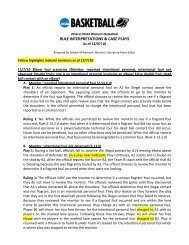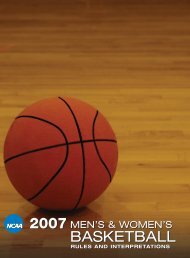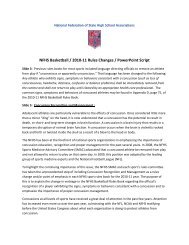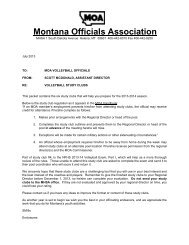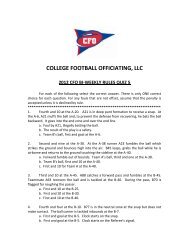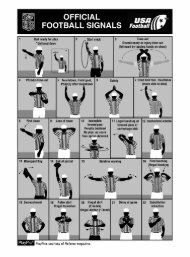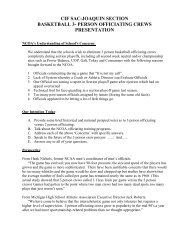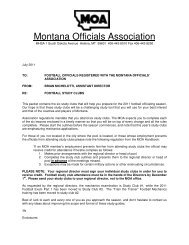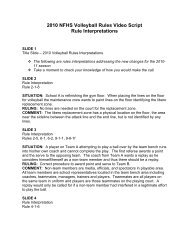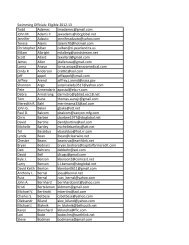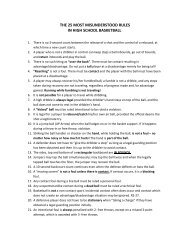MONTANA OFFICIALS ASSOCIATION - MOA - ArbiterSports
MONTANA OFFICIALS ASSOCIATION - MOA - ArbiterSports
MONTANA OFFICIALS ASSOCIATION - MOA - ArbiterSports
Create successful ePaper yourself
Turn your PDF publications into a flip-book with our unique Google optimized e-Paper software.
<strong>MONTANA</strong> <strong>OFFICIALS</strong> <strong>ASSOCIATION</strong><br />
BASKETBALL STUDY CLUB OUTLINES<br />
2012-2013<br />
LESSON #6<br />
NAME______________________________________________________________________________<br />
CLUB_____________________________________ DATE____________________________________<br />
I. Please review and discuss the following information from the three-person mechanics preseason guide:<br />
‣ Signaling and Communication<br />
The key to quality signaling is remembering that it is a sequence of fluid movements. Take your time.<br />
Signals executed with separate and distinct motions ensure clarity; jumbled quickly together and the<br />
messages are lost. It’s not a style contest — it’s a means of communicating valuable information to the<br />
players, coaches, scorers and fans. Use only NFHS approved signals. The use of “personal” signals to<br />
communicate with partners is inappropriate and can be confusing. Use the same signals that have the<br />
same meaning for all involved in the game. During the signaling sequence, keep your head up to watch<br />
for additional player activity and ensure dead-hall officiating. Do not leave the area to report a foul or<br />
signal a violation until the players appear calm and you’re sure your partner(s) are watching dead-ball<br />
action. If there was significant contact and the players ended up on the floor, remain in the area until the<br />
players have returned to their feet. When there’s significant contact, communicate with your partners that<br />
you’re in the area to let all players know they are being closely monitored. Once you’ve decided it’s okay<br />
to move to report, go around the players to the reporting area. Don not run through a crowd because then<br />
players are behind you and you lose sight of them. That’s when problems occur. By running around the<br />
crowd, you’re ensuring your safety and their safety. Get to the reporting area. It is not acceptable to stand<br />
one step off the end line to report a foul. The scorer has to be able to see you report. Communicate<br />
closely with your partner(s). It is imperative that your partners be the first to know what you’ve got and<br />
how the ensuing action will restart (free throw, throw—in). On time-outs, communicate the spot that the<br />
ball will be restarted from before going to report the time-out to the scorer. Don’t consider your call<br />
completed until you’re partners know what you’ve got. It’s not a race, SO take your time and<br />
communicate clearly.




